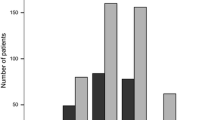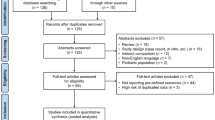Abstract
Background
Teriflunomide (TRF) and Dimethyl fumarate (DMF) are licensed drugs for relapsing-remitting Multiple Sclerosis (RRMS).
Objectives
We aimed to compare the rate and the time to discontinuation among persons with RRMS (pwRRMS), newly treated with TRF and DMF.
Materials and methods
A retrospective study on prospectively collected data was performed in nine tertiary MS centers, in Italy. The 24-month discontinuation rate in the two cohorts was the primary study outcome. We also assessed the time to discontinuation and reasons of therapy withdrawn. Discontinuation of TRF and DMF was defined as a gap of treatment ≥ 60 days.
Results
A cohort of 903 pwRRMS (316 on TRF and 587 on DMF) was analyzed. During 24 months of follow-up, pwRRMS on TRF and DMF showed similar discontinuation rates. The analysis of predictors with Cox regression model showed differences between the two groups (p for log-rank test = 0.007); male gender [HR 2.21 (1.00–4.90); p = 0.01] and the number of previous switches [HR 1.47 (1.16–1.86); p = 0.01] were associated with higher hazard of discontinuation in the DMF group.
Conclusions
In a real-world setting, pwRRMS on TRF and DMF had similar discontinuation rates over 24 months. Male pwRRMS on DMF with a previous history of therapeutic failure are at more risk of discontinuation therapy.



Similar content being viewed by others
References
Reich DS, Lucchinetti CF, Calabresi PA (2018) Multiple Sclerosis. N Engl J Med 378(2):169–180
D’Amico E, Zanghi A, Leone C, Tumani H, Patti F (2016) Treatment-related progressive multifocal leukoencephalopathy in multiple sclerosis: a comprehensive review of current evidence and future needs. Drug Saf 39(12):1163–1174
D’Amico E, Leone C, Caserta C, Patti F (2015) Oral drugs in multiple sclerosis therapy: an overview and a critical appraisal. Expert Rev Neurother 15(7):803–824
D’Amico E, Patti F, Zanghi A, Zappia M (2016) A personalized approach in progressive multiple sclerosis: the current status of disease modifying therapies (DMTs) and future perspectives. Int J Mol Sci 17(10):1725
Eichler HG, Abadie E, Breckenridge A, Flamion B, Gustafsson LL, Leufkens H et al (2011) Bridging the efficacy–effectiveness gap: a regulator’s perspective on addressing variability of drug response. Nat Rev Drug Discov 10(7):495–506
Johnson KM, Zhou H, Lin F, Ko JJ, Herrera V (2017) Real-world adherence and persistence to oral disease-modifying therapies in multiple sclerosis patients over 1 year. J Manag Care Spec Pharm 23(8):844–852
Lattanzi S, Danni M, Taffi R, Cerqua R, Carlini G, Pulcini A et al (2017) Persistence to oral disease-modifying therapies in multiple sclerosis patients. J Neurol 264(11):2325–2329
Eriksson I, Cars T, Piehl F, Malmstrom RE, Wettermark B, von Euler M (2018) Persistence with dimethyl fumarate in relapsing-remitting multiple sclerosis: a population-based cohort study. Eur J Clin Pharmacol 74(2):219–226
Ferraro D, Camera V, Baldi E, Vacchiano V, Curti E, Guareschi A et al (2018) First-line disease-modifying drugs in relapsing-remitting multiple sclerosis: an Italian real-life multicenter study on persistence. Curr Med Res Opin 1:1–5
Sejbaek T, Nybo M, Petersen T, Illes Z (2018) Real-life persistence and tolerability with dimethyl fumarate. Mult Scler Relat Disord 24:42–46
Vollmer B, Ontaneda D, Bandyopadhyay A, Cohn S, Nair K, Sillau S et al (2018) Discontinuation and comparative effectiveness of dimethyl fumarate and fingolimod in 2 centers. Neurol Clin Pract 8(4):292–301
Mallucci G, Annovazzi P, Miante S, Torri-Clerici V, Matta M, La Gioia S et al (2018) Two-year real-life efficacy, tolerability and safety of dimethyl fumarate in an Italian multicentre study. J Neurol 265(8):1850–1859
Polman CH, Reingold SC, Banwell B, Clanet M, Cohen JA, Filippi M et al (2011) Diagnostic criteria for multiple sclerosis: 2010 revisions to the McDonald criteria. Ann Neurol 69(2):292–302
D’Amico E, Zanghì A, Callari G, Borriello G, Gallo A, Graziano G et al (2018) Comparable efficacy and safety of dimethyl fumarate and teriflunomide treatment in relapsing-remitting multiple sclerosis: an Italian real-word multicenter experience. Ther Adv Neurol Disord 11:1756286418796404
https://www.ema.europa.eu/...guideline/guideline-good-pharmacovigilance-practices-gv. Accessed Oct 2018
Confavreux C, O’Connor P, Comi G, Freedman MS, Miller AE, Olsson TP et al (2014) Oral teriflunomide for patients with relapsing multiple sclerosis (TOWER): a randomised, double-blind, placebo-controlled, phase 3 trial. Lancet Neurol 13(3):247–256
Fox RJ, Miller DH, Phillips JT, Hutchinson M, Havrdova E, Kita M et al (2012) Placebo-controlled phase 3 study of oral BG-12 or glatiramer in multiple sclerosis. N Engl J Med 367(12):1087–1097
Gold R, Kappos L, Arnold DL, Bar-Or A, Giovannoni G, Selmaj K et al (2012) Placebo-controlled phase 3 study of oral BG-12 for relapsing multiple sclerosis. N Engl J Med 367(12):1098–1107
O’Connor P, Comi G, Freedman MS, Miller AE, Kappos L, Bouchard JP et al (2016) Long-term safety and efficacy of teriflunomide: nine-year follow-up of the randomized TEMSO study. Neurology 86(10):920–930
Lugaresi A, Rottoli MR, Patti F (2014) Fostering adherence to injectable disease-modifying therapies in multiple sclerosis. Expert Rev Neurother 14(9):1029–1042
Theodore Phillips J, Erwin AA, Agrella S, Kremenchutzky M, Kramer JF, Darkes MJ et al (2015) Consensus management of gastrointestinal events associated with delayed-release dimethyl fumarate: a Delphi study. Neurol Ther 4(2):137–146
Ziemssen T, Kern R, Thomas K (2016) Multiple sclerosis: clinical profiling and data collection as prerequisite for personalized medicine approach. BMC Neurol 16(1):124
Acknowledgements
Authors are grateful to Gregory Scott, PhD for language editing.
Author information
Authors and Affiliations
Corresponding author
Ethics declarations
Ethical standards
The study has been approved by the local ethics committee (Catania 1) and has been performed in accordance with the ethical standards laid down in the 1964 Declaration of Helsinki and its later amendments. All persons gave their informed consent prior to their inclusion in the study. Details that might disclose the identity of the subjects under study have been omitted.
Conflicts of interest
DE received personal fees by Biogen and Sanofi. He also received travel fundings from Bayer Biogen and Merck. ZA received travel fundings from Bayer-Schering and Sanofi Genzyme outside of the submitted work. BG received personal fees by Biogen and Sanofi. She also received travel fundings from Bayer Biogen and Merck. SM has nothing to disclose. CG received personal fees by Biogen and Sanofi. She also received travel fundings from Bayer Biogen and Merck. GA received personal fees by Biogen and Sanofi. He also received travel fundings from Bayer Biogen and Merck. SG received personal fees for speaking activities by Bayer Biogen Merck Novartis and Teva. BM received personal fees by Biogen and Sanofi. She also received travel fundings from Bayer Biogen and Merck. VP received personal fees by Biogen and Sanofi, Novartis and Roche. She also received travel fundings from Bayer Biogen and Merck. BRB served on the advisory board for Almirall and received grant for congresses participation by Sanofi and Merck. DR reports no disclosures. GLME served on the advisory board for Bayer, Biogen Celgene, Merck, Novartis, Roche, Sanofi and Teva. He also received personal fees for speaking activities at congresses or sponsored symposia. PC served on the advisory board for Bayer, Biogen Celgene, Merck, Novartis, Roche, Sanofi and Teva. He also received personal fees for speaking activities at congresses or sponsored symposia. TG served on the advisory board for Bayer, Biogen Celgene, Merck, Novartis, Roche, Sanofi, Teva and Almirall. He also received personal fees for speaking activities at congresses or sponsored symposia. ZM served on the advisory board for Bayer, Biogen Celgene, Merck, Novartis, Roche, Sanofi, Teva and Almirall. He also received personal fees for speaking activities at congresses or sponsored symposia. PF served on the advisory board for Bayer, Biogen Celgene, Merck, Novartis. Roche, Sanofi, Teva and Almirall. He also received personal fees for speaking activities at congresses or sponsored symposia.
Rights and permissions
About this article
Cite this article
D’Amico, E., Zanghì, A., Sciandra, M. et al. Discontinuation of teriflunomide and dimethyl fumarate in a large Italian multicentre population: a 24-month real-world experience. J Neurol 266, 411–416 (2019). https://doi.org/10.1007/s00415-018-9144-9
Received:
Revised:
Accepted:
Published:
Issue Date:
DOI: https://doi.org/10.1007/s00415-018-9144-9




